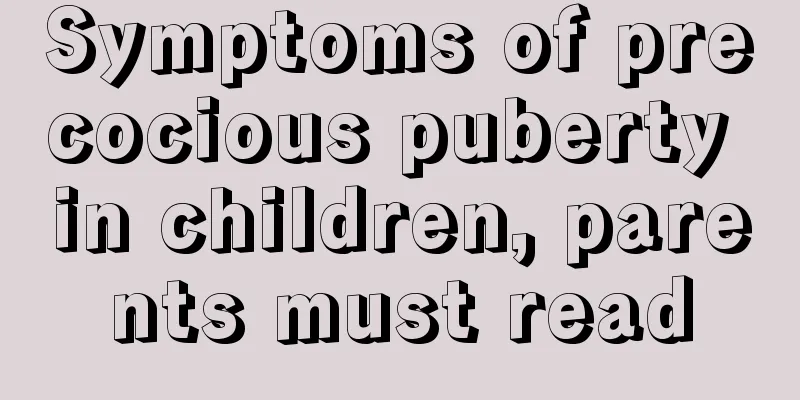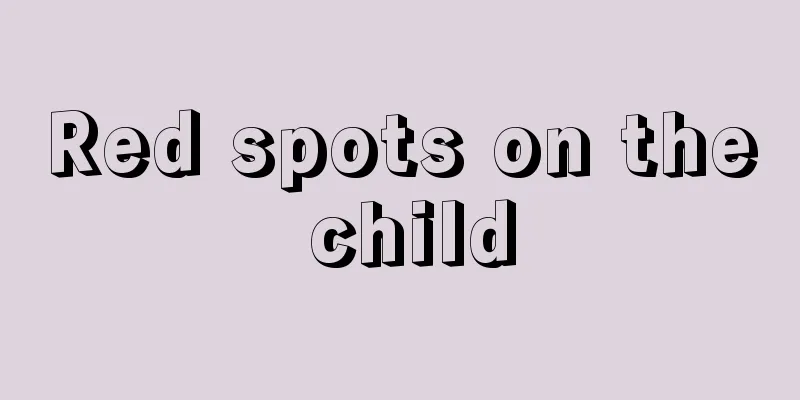What to do if hand, foot and mouth disease has a high fever of 39 degrees

|
Hand, foot and mouth disease is a disease with a relatively high incidence among children. There are many symptoms of finger and mouth disease, the most common of which is that the child will have a high fever. Therefore, if a high fever is caused by hand, foot and mouth disease, not only should certain methods be taken to relieve the symptoms of the high fever, but the hand, foot and mouth disease should also be treated, so as to fundamentally solve the problem of the child's high fever. Here we will introduce to you the solution to hand, foot and mouth disease with a high fever of 39 degrees. 1. What to do if your hand, foot and mouth have a fever of 39 degrees Hand, foot and mouth disease mainly occurs in children under 4 years old, but adults can also get the disease, so it can be said that everyone is susceptible. The symptom of hand, foot and mouth disease is that after infection, one only gains immunity to that type of virus, and has no cross-immunity to reinfection with other types of viruses. That is, after suffering from hand, foot and mouth disease, one may suffer from hand, foot and mouth disease again due to infection with other types of viruses. The incubation period of hand, foot and mouth disease is usually 2 to 10 days, with an average of 3 to 5 days. Let us take a look at the symptoms of hand, foot and mouth disease: 1. Common case manifestations Acute onset, fever, scattered blisters on the oral mucosa, maculopapular rashes and blisters on the hands, feet and buttocks, with inflammatory red halos around the blisters and less fluid in the blisters. May be accompanied by symptoms such as cough, runny nose, and loss of appetite. Some cases only present as rash or herpangina. Most patients recover within a week and the prognosis is good. In some cases, the rash may be atypical, such as appearing in a single area or only as maculopapular rash. 2. Symptoms of severe cases In a few cases (especially those under 3 years old), the disease progresses rapidly, with meningitis, encephalitis (brainstem encephalitis is the most dangerous), encephalomyelitis, pulmonary edema, circulatory disorders, etc. occurring within 1 to 5 days of onset. In very rare cases, the condition is critical and can lead to death, and survivors may have sequelae. (1) Nervous system manifestations include poor mental state, drowsiness, irritability, headache, vomiting, delirium and even coma; limb tremors, myoclonus, nystagmus, ataxia, eye movement disorders; weakness or acute flaccid paralysis; convulsions. Physical examination may reveal signs of meningeal irritation, weakened or absent tendon reflexes, and positive pathological signs such as Babinski's sign. (2) Respiratory system symptoms include shallow breathing, difficulty breathing or changes in rhythm, cyanosis of the lips, coughing, coughing up white, pink or bloody foamy sputum; moist rales or sputum sounds can be heard in the lungs. (3) Circulatory system symptoms include pale complexion, skin patterns, cold limbs, cyanosis of fingers and toes, cold sweats, and prolonged capillary refill time. The heart rate increases or decreases, the pulse becomes shallow or weak or even disappears; the blood pressure increases or decreases. 2. What should I do if my child has a fever of 39 degrees? According to body temperature conditions, fever is divided into: low fever: 37.4 ~ 38 ℃; moderate fever: 38.1 ~ 39 ℃; high fever: 39.1 ~ 41 ℃; hyperpyrexia: above 41 ℃. There are many causes of fever in children. Upper respiratory tract infection, gastroenteritis, tonsillitis, pneumonia and all infectious diseases may cause fever symptoms. In addition, babies under one year old may also develop fever due to urinary tract infections, gastrointestinal diseases, and hand, foot and mouth disease. In many cases, a doctor must be consulted to find out the real cause of the fever. If the fever is below 38 degrees, consider taking physical cooling measures, such as wiping the body with warm water or applying ice packs; if the fever is above 38.5 degrees, consider taking medication to reduce the fever, such as Tylenol. First, cool the child down physically by using 35%-45% alcohol or warm water for a sponge bath, mainly in areas where large blood vessels are distributed, such as the forehead, neck, armpits, groin and thighs. After taking the medicine, pay attention to observe your baby's symptoms to see if they persist. After the fever of a common cold subsides, the chance of recurrence is low. Generally, if there is inflammation in the body, fever is prone to recurring, so if symptoms of recurring fever occur, you should seek medical attention as soon as possible. |
<<: Emergency treatment for a child with a high fever of 39 degrees
>>: Two month old baby has umbilical hernia
Recommend
What is the cause of vulvitis in young girls?
Many parents believe that girls do not need to pa...
How to care for a one-year-old baby with herpetic pharyngitis?
Regardless of the season, herpangina is highly co...
Is it normal for my baby to have a cool forehead?
The health of the baby is very important to paren...
18-month-old baby's intellectual development
During the baby's growth and development proc...
Can children have their teeth cleaned?
There are many misunderstandings about teeth clea...
Can children’s indigestion be cured by taking medicine? How to deal with it?
Children have no resistance to delicious food, th...
What kind of diapers are good to introduce
Some parents are very concerned about their child...
What are the development standards for babies in the fifth month?
The growth and development of babies are differen...
The child had a high fever of 39 degrees 5 overnight
Parents should always pay attention to changes in...
Can babies eat fish roe?
Fish roe has high nutritional value. It is rich i...
How to get children to eat more vegetables
Children nowadays generally have a problem of bei...
How to clean your baby's ears
The ear is a relatively fragile part of the human...
9 and a half month baby development indicators
When the baby is 9 months old, his body enters a ...
What is the appropriate height for a child's pillow?
Many parents are most concerned about their child...
Is a baby fence necessary?
When a child comes into this world from his mothe...









